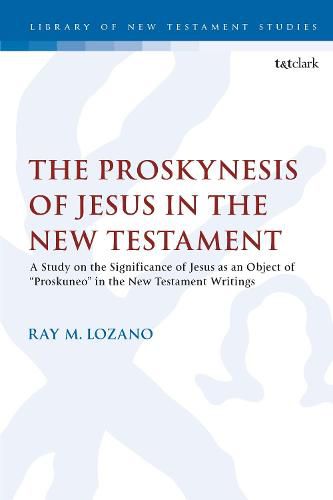Readings Newsletter
Become a Readings Member to make your shopping experience even easier.
Sign in or sign up for free!
You’re not far away from qualifying for FREE standard shipping within Australia
You’ve qualified for FREE standard shipping within Australia
The cart is loading…






This book investigates the use of the Greek term proskuneo with Jesus as the object in the New Testament writings. Ray M. Lozano unpicks this interesting term and examines its capacity to express various degrees of reverence directed toward a superior: from a respectful greeting of an elder, to homage paid to a king, to cultic worship paid to a god.
Lozano then looks at the term in reference to Jesus in the New Testament writings, and carefully considers whether Jesus is portrayed as receiving such reverence in a relatively weak sense, as a merely human figure, or in a relatively strong sense, as a divine figure. Lozano highlights how scholars are divided over this issue and provides a fresh, thorough examination of the New Testament material (Mark, Matthew, Luke-Acts, John, Hebrews, and Revelation) and, in so doing shows, that each of these New Testament writings, in their own unique ways, presents Jesus as a divine figure-uniquely and closely linked to the God of Israel in making him an object of proskuneo.
$9.00 standard shipping within Australia
FREE standard shipping within Australia for orders over $100.00
Express & International shipping calculated at checkout
This book investigates the use of the Greek term proskuneo with Jesus as the object in the New Testament writings. Ray M. Lozano unpicks this interesting term and examines its capacity to express various degrees of reverence directed toward a superior: from a respectful greeting of an elder, to homage paid to a king, to cultic worship paid to a god.
Lozano then looks at the term in reference to Jesus in the New Testament writings, and carefully considers whether Jesus is portrayed as receiving such reverence in a relatively weak sense, as a merely human figure, or in a relatively strong sense, as a divine figure. Lozano highlights how scholars are divided over this issue and provides a fresh, thorough examination of the New Testament material (Mark, Matthew, Luke-Acts, John, Hebrews, and Revelation) and, in so doing shows, that each of these New Testament writings, in their own unique ways, presents Jesus as a divine figure-uniquely and closely linked to the God of Israel in making him an object of proskuneo.